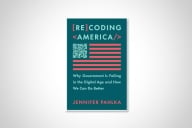You have /5 articles left.
Sign up for a free account or log in.
Yesterday I heard the third person in a month make the same point, each in a different context. I’d love to find out if others are seeing the same thing.
The discussions were about community colleges offering dual-enrollment classes to high school students. The most popular offerings tend to be the “gen eds” that don’t require specialized facilities: English, psychology, math and the like. Those classes tend to transfer well into almost any major, so they aren’t likely to be disallowed if a student chooses to major in business. Most high schools may not have the physical facilities to offer, say, microbiology, but offering sociology isn’t a problem. These subjects also lend themselves to large enough class sizes that they don’t create economic issues for the high school.
But that last point can be read two ways.
Provosts and VPAAs know well the cross-subsidy model of class size, in which higher-enrolled gen eds effectively subsidize lower-enrolled specialty courses. Running sections of Intro to Psych with enrollments in the 30s generates revenue to offset running nursing clinicals in sections of six or eight. To understand why clinicals tend to be smaller, just imagine cramming 30 students into a hospital room to work with a patient. Not happening.
As a recent CCRC study correctly noted, dual-enrollment classes tend not to be profitable for community colleges to run. They’re often run at a deep discount, if they incur charges at all.
To the extent that dual-enrollment classes capture students who otherwise never would have set foot in a community college, one could argue that from the perspective of the college budget, it’s a wash. But to the extent that students who would have taken higher-enrolled classes the following year at the college instead take them as dual enrollment at deep discounts, colleges lose the margin that they had counted on to cover the smaller and more expensive classes.
In other words, to the extent that the slate of courses offered on campus includes fewer gen eds, the more expensive courses take up a larger share. The lost margins from campus-based gen eds are a largely ignored cost.
Admittedly, this is only true to the extent that dual-enrollment courses are supported at a lower level. In theory, a state could fund dual enrollment such that colleges make the same margin they would have made with a campus-based course. Depending on who teaches the dual-enrollment courses, there might still be issues with full-time faculty loads in a few areas, but at least the overall budget would be held harmless.
In my neck of the woods, though, that doesn’t happen.
Dual-enrollment programs grew piecemeal, first slowly and then quickly. The key point is that they grew before most places really thought through the implications of their growth. Now we’re trying to retrofit a kind of rationality on a system that has already taken root and grown its own constituencies. (Policy folks will notice a parallel to the health-care system in the U.S., which is a monument to unintended consequences.) To the extent that community colleges are pushed to focus more on specialized vocational courses, their cost of delivery will increase.
To this point, the folks I’ve heard make this observation have been people who work in higher ed. It hasn’t quite made the leap to the policy domain yet. It needs to; the impact is growing every year.
None of this should be understood as an attack on dual enrollment. It’s just an effort to call attention to a side effect before the budgetary damage gets worse.



